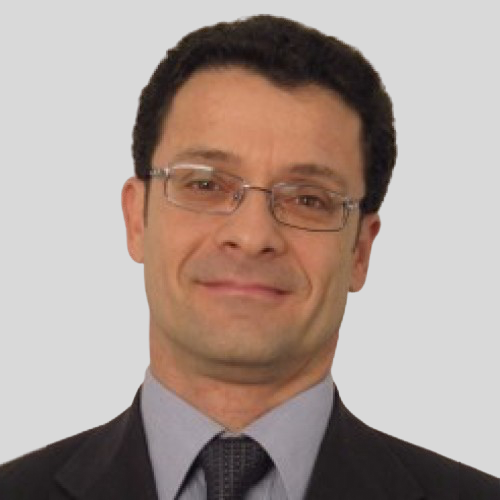9-11 December 2025
Muscat, Oman
13:35 – 13:55
Datacenter Trends and Power Architecture evolution
Datacenters are in big disruption with AI proliferation, introducing very fast product cycles. Power consumption at the xPU is increasing dramatically (multi-kW), bringing the total power in the rack up to several hundreds kW to 1MW.
For this reason, conventional architecture of power distribution inside the rack, based on 48V intermediate Bus generated from the AC main, needs to be modified to manage this dramatic increase of power. Current structure of the rack and architecture cannot manage the power increase without incurring in huge distribution losses.
A higher Voltage DC Bus is getting introduced by the Hyperscalers, and supported in R&D by the OEMs and PSU suppliers. This will be generated in an external side-car rack starting from the main AC, while the computational rack will be supplied by this voltage and will contain all the GPUs, or TPUS required to increase the computational performance of the AI infrastructure. The new isolated topologies involved in this high Voltage DC Architecture will require many high voltage switches, especially GaN will be extremely useful, since of the capability to switch extremely fast, and as a consequence enable a smaller size and high power density required by the huge power level of these new Racks. On the low voltage side to generate the intermediate 48V to reuse the existing ecosystem, both Silicon MOSFETs or GaN HEMT can be alternatives to achieve the performance and size requirement.
Other challenges have to be resolved also at lower voltage, where the current required by the GPU will also increase, with values that trend to a few kW. This requires to deliver the power to the load in unconventional ways, with vertical delivery, from the opposite side of the SoC, in the aim to reduce distribution losses. This vertical power delivery (VPD) can be implemented by discrete solutions, or more integrated modular approaches to reduce size and parasitics, integrating inductors and capacitors together with active elements. Renesas is able to supports all these new architectural elements, leveraging its GaN and Si switches portfolio, together with digital controllers for IBC and Multiphase, drivers, and digital and analog PoL and BMS controllers.

Pietro Scalia
Renesas Electronics Corporation
Pietro Scalia is the Head of System Application and Marketing for Power at Renesas Electronics. His team localized in the three regions is defining and supporting power system solutions for all the market segments, leveraging the entire Power portfolio and addressing new market trends and power architectures.
At onsemi (2021-2023) he lead the Munich Application and PLM team of Automotive EV-Traction Solutions, to define and develop SiC and Si Power Module and Bare DIE portfolio. Previously he worked 11 years at TI, with worldwide Business Development responsibilities on Power products with application focus swinging from Automotive market sector to Telecommunications and Cloud, leveraging his earlier career in Siemens, Ericsson, ST Microelectronics and Academia.
Renesas Electronics Corporation
Company Profile
Renesas Electronics empowers a safer, smarter and more sustainable future where technology helps make our lives easier.
A leading global provider of microcontrollers, Renesas combines our expertise in embedded processing, analog, power and connectivity to deliver complete semiconductor solutions. These Winning Combinations accelerate time to market for automotive, industrial, infrastructure and IoT applications, enabling billions of connected, intelligent devices that enhance the way people work and live.
